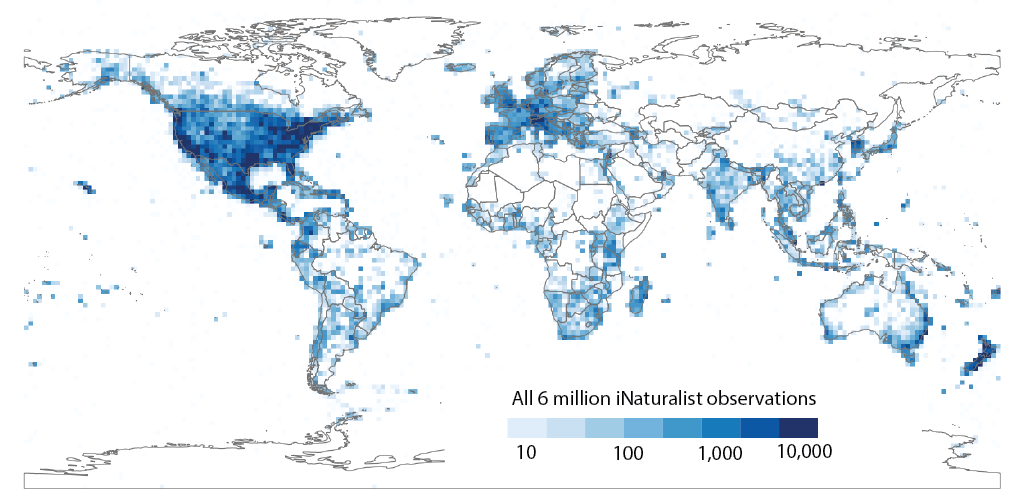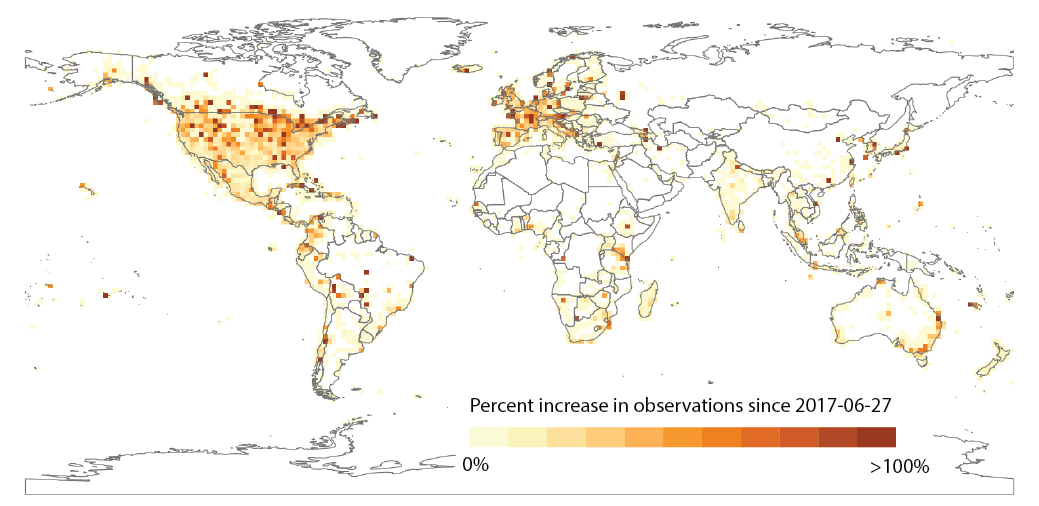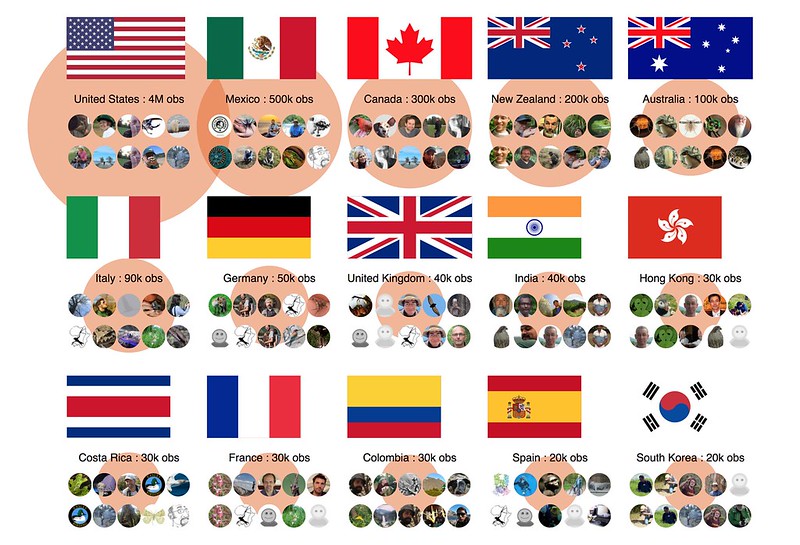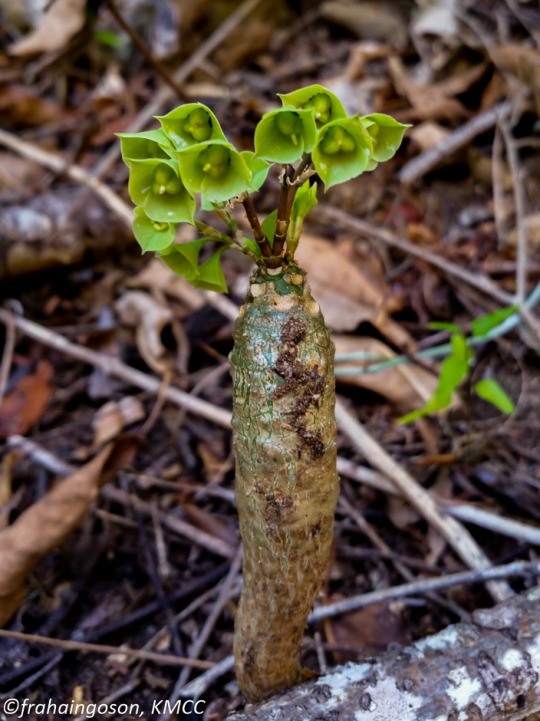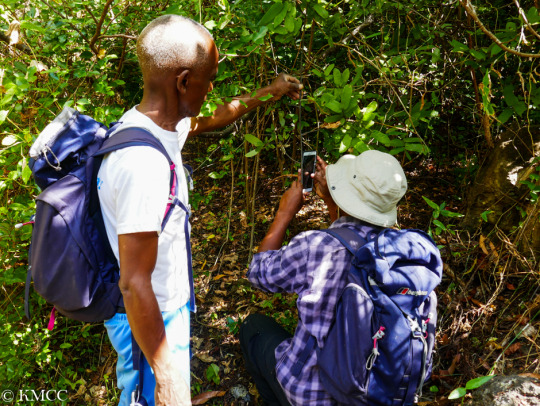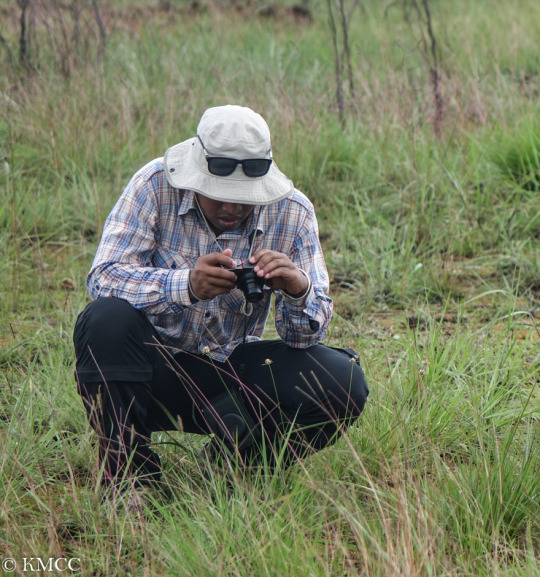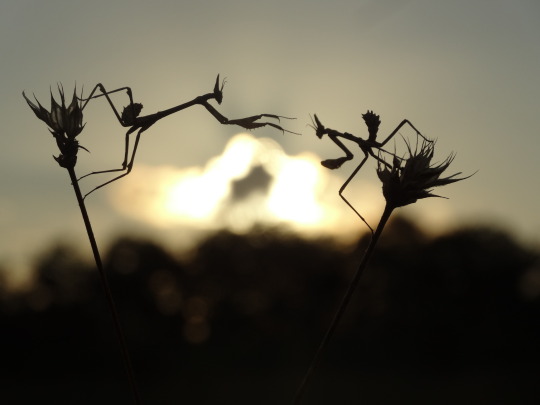2 weeks ago, we celebrated reaching 6,000,000 observations. This week, we have a related, but slightly different milestone to celebrate. We now have over 150,000 'observers' - ie people who have contributed at least one observation*! Here's all 150,000 observers (scaled by number of observations each). A big thank you to everyone who has contributed!
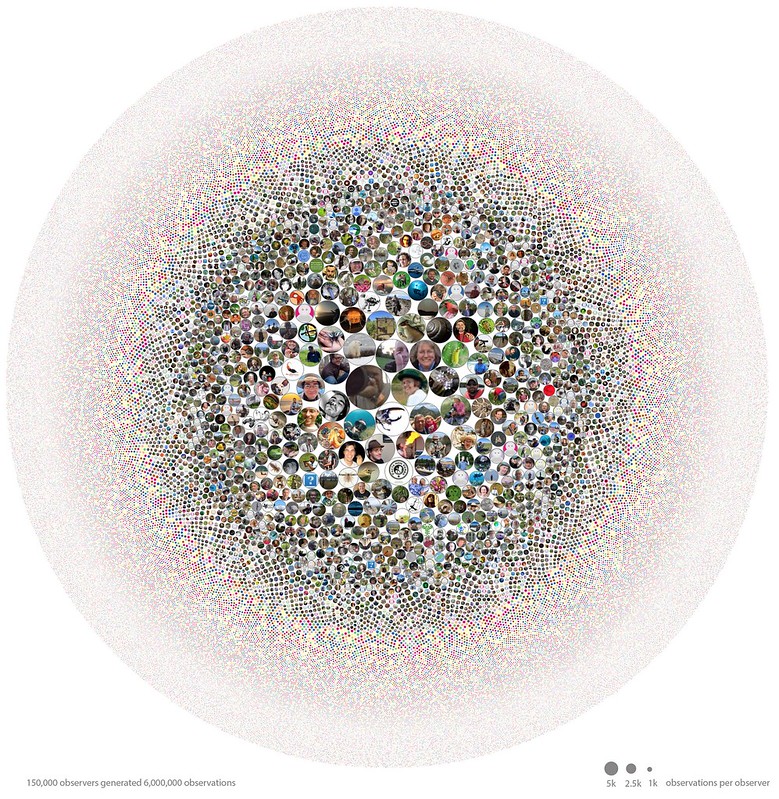
Here's another way of looking at that same data by plotting number of observers on the x-axis and number of observations on the y-axis. The curve shows the number of observers with at least that many observations.

So at the top of the curve we see @finatic in first place with 52,656 observations, @erikamitchell in second place with 36,662 observations etc.... Interestingly, the intersection of the number of observers and the number of observations is just shy of 1,000. In other words, there are just about 1,000 observers on iNaturalist who have each posted at least 1,000 observations.
Both these graphs show the disproportionate contribution that iNat power-users like finatic, erikamitchell, @jaykeller, @sambiology, @dpom etc. have had towards the total pool of 6,000,000 observations posted so far. I'm going to take this opportunity to coin a new unit of measurement which I'm calling the finatic with a current exchange rate of 52,656 observations. That means the picture below of sambiology, @psyllidhipster and @treegrow (courtesy of @muir from the recent 2017 iNat-athon in Southeast Arizona) weighs in at 42,240 (29,454+6,146+6,640) cumulative observations. Or 0.8 finatics.

Likewise, this picture of finatic, jaykeller, sambiology, @silversea_starsong, and @nathantaylor7583 (also muir's & from the iNat-athon) clocks in at 135,928 (3,769+20,372+52,656+29,454+29,677) cumulative observations. Or 2.58 finatics. If anyone can produce a picture worth more finatics than this one, I'd love to see it!

Its fun to joke around with competitions around these stats (I get great satisfaction pointing out to @kueda that he's fallen down to 20th place on the identifier leaderboard while I'm holding on in 18th place...). But it really is the hard work that each of these individual observers has put in recording and sharing observations (combined with the equally important work of the iNat identifier community) that makes all the science coming out of iNaturalist possible. This includes our recent computer vision analyses which is completely trained off of iNaturalist observations and identifications. Also our ongoing work to try to get a handle on the spatio-temporal distributions of organisms. For example, the visualization below of the spring bloom of Yellow trout lilies (Erythronium americanum) across the eastern US is completely driven by iNaturalist observations. And also all of these studies that have used data from iNaturalist shared via GBIF.
Sophisticated analyses like these computer vision and spatio-temporal examples are extremely data hungry, and the iNaturalist data stream has only just grown to the point where really exciting 'big data' analyses are possible. Our computer vision model, for example, is trained up on about 20 thousand species for which we have enough data. This may seem like a lot of species, but it really represents just a tiny fraction of the 2,000,000+ species we know are out there. So we have alot of work still to do!
Hopefully, this is just the tip of the iceberg. If we can sustain the growth rate in iNaturalist observations from the past seven years into the next three years, we'll be dealing with around 50,000,000 observations a year in 2020. While there are a thousand reasons why we shouldn't expect to be able to maintain this growth rate, its exciting to think about what this volume of observations would allow scientists studying life on Earth to do. Imagine the computer-vision and spatio-temporal analyses from the examples above working on hundreds of thousands of species from around the globe - that would be pretty cool!

And to continue this likely shamefully over optimistic projection, in order to reach that 2020 5,000,000 observation goal we'd need contributions from about 1,000,000 observers up from the current 150,000. And before reaching 1,000,000 observers starts seeming like an easy thing to pull off, remember that only represents a tiny fraction of the people iNaturalist would have to reach. For example, iNaturalist is now getting over 100,000 visitors to the website and over 7 thousand app downloads (iOS + Android) each week. But only about 500,000 of these visitors have taken the next step and created iNat accounts. And of these half a million people, only about 1/3 (150,000) have actually posted observations.

What would it take to try to get 1,000,000 people out observing nature by 2020? Is it possible for iNaturalist to scale that much and still be such a polite and knowledgable community of awesome people? I'm not sure 50,000,000 observations in 2020 is a realistic goal, but its kind of a neat number to keep in mind for where we'd be if we were somehow able to stay the coarse for another three years!
*As usual, when I count observations I mean 'verifiable' observations. We've actually had more like 190,000 people post about 7.3 million observations if you include 'casual' observations (that is observations without photos, or of captive organisms, or missing dates/locations etc.)






